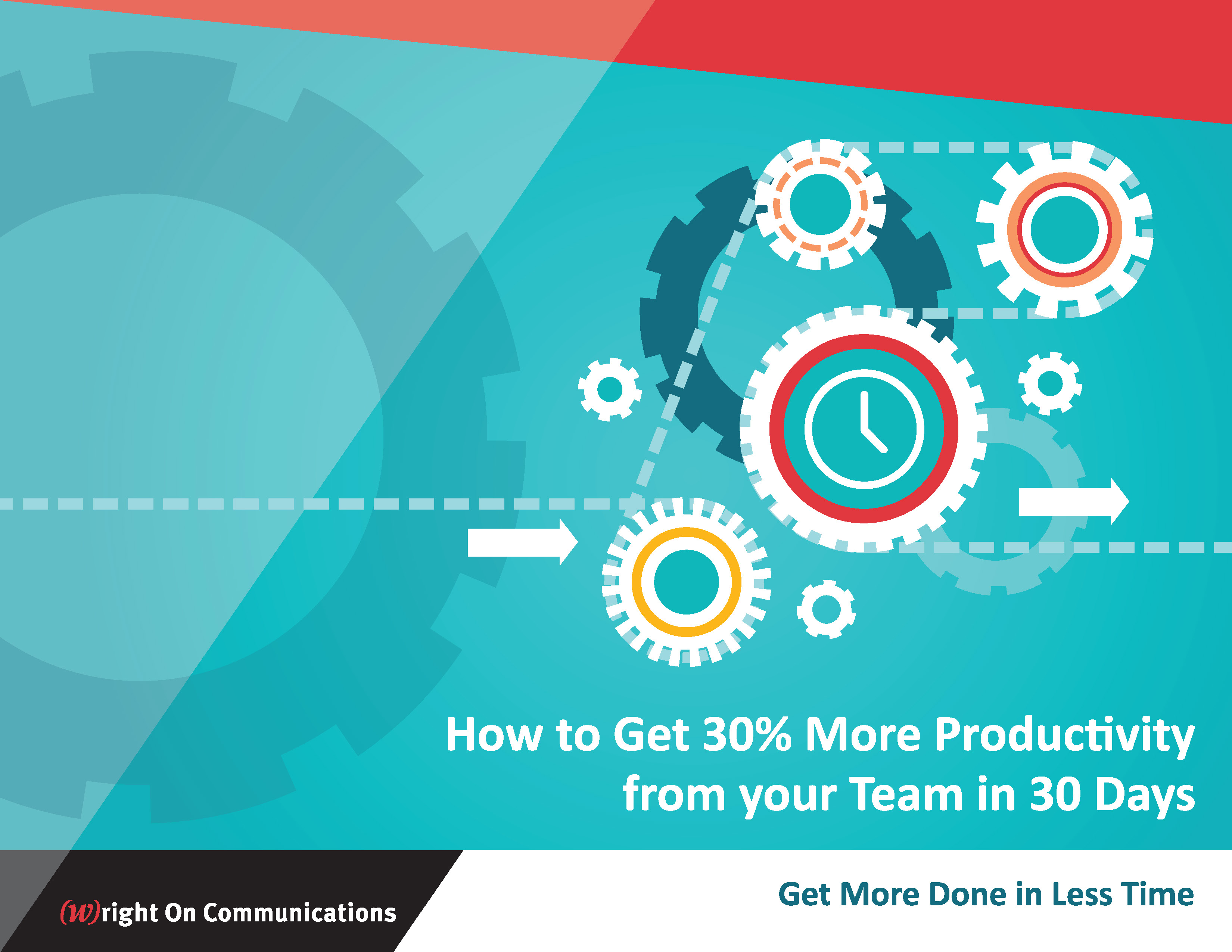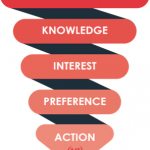
By: President, Julie Wright
Twitter: @juliewright
Delays are expensive. B2B marketers know this! When a product launch is pushed back, potential revenue is lost. When a prospect’s purchasing decision drags on, that’s money your company isn’t putting in the bank. So, yes, time is money.
That’s why the team at (W)right On Communications prizes productivity—so much so that we wrote an e-book full of tips for being more productive to share what we know. It’s called “How to Get 30% More Productivity from your Team in 30 Days.”
Public relations and marketing agencies are environments where time is an extremely perishable commodity. Like many professional services companies and consultants, we charge for our expertise but bill by the unit of time. As our colleague’s coffee mug states, “You have as many hours in a day as Beyoncé.” And that is the truth. It is what you do with that time that sets you apart.
So, to achieve the highest public relations and marketing communications ROI for our clients, we’ve found ways to get more done in less time and make sure that time is never wasted—ours and our clients. (Internally, this is known as our GSD philosophy.)
Here’s some data on why productivity matters:
- 28% of the average office worker’s day is spent focused on unnecessary distractions.
- 27% of office workers feel disorganized. (And an equal number must be lying or in denial!)
- Over 30 hours a month are spent in unproductive meetings.
I can think of several people in my professional network who are so busy attending meetings that they’re not available to advance their real work (that’s where consultants like us can come to the rescue to take ownership of key projects and keep them moving on time and on budget).
For this post, I am going to focus on prioritization because it is essential to productivity.
You will get a ton more done in your day if you don’t overthink prioritization and instead make it a simple, no-judgment habit. In other words, make prioritization a no brainer. It’s easier than you might think.
Start by creating categories of work. Come up with three to five buckets for your tasks. Now prioritize those. The highest ranked should be the task that is most aligned with revenue or profits. What part of your daily work most impacts your company’s bottom line or your team’s goals?
You’ll be torn between two types of activities: those that drive short-term rewards and are very deadline oriented and those that drive longer-term performance and are not deadline-driven. It’s this second group typically has a much larger impact on your performance, your team’s or your company’s but falls by the wayside when the urgent gets all of your attention.
This is the tension between the urgent and the important that is a fact of business life.
But business is all about creating efficient systems. So set a policy for yourself to make handling these conflicting priorities a no-brainer. For example, plan to always prioritize 2 or 3 daily tasks from the urgent bucket and 1 to 2 from the important bucket every day. And if you’re not getting to the important task after three days, move it to the top of your list.
This blog post is a perfect example of that. Writing it is not urgent to my business today, but long-term it is very important to my business. Because of that I have prioritized it ahead of some client and other agency management tasks.
If a client called me right now with a crisis or urgent request that would become my immediate priority – prioritization needs to be somewhat fluid. What I like about this approach is that it brings a sense of order to the chaos which makes me feel better about my crazed work life and more in control of it.
Once you have prioritized the type of work you do every day and determine a policy for managing the urgent and the important, schedule five to 10 minutes at the start and end of every day to update and categorize your work.
The beauty of this is that each morning you can look at the day’s demands in a relaxed state of mind no matter how much work greets you. Give each task a category, rank your categories and then rank your tasks. Voila. There’s your list. You might choose to do this at the end of the day only so that your list is there for you each morning and you get the satisfaction of hitting the ground running—whatever makes prioritization easier for you.
I also like this morning ritual because it allows me to start the day feeling a sense of immediate accomplishment. (See our tip for Day 1 in “How to Get 30% More Productivity from your Team in 30 Days.”)
Do this prioritization process first thing before you even look at your email. You can look at your email later and make adjustments as needed. (See Day 2 for ways to minimize email distractions.)
A tool that I’ve been using is Todoist. I can easily move tasks around, assign or change due dates or create and schedule recurring tasks. Plus I can color code my priorities. The Todoist mobile app is especially handy for capturing action items during client meetings.
Despite all of my best efforts, there are too many days where I don’t even get to my to-do list. While we have identified and adopted many methods at (W)right On Communications for increasing our productivity, we’re always open to new and better ideas. Please feel free to comment and share ways you tackle your to do list!








 Grant Wright
Grant Wright





 Corie Fiebiger
Corie Fiebiger
 Shae Geary
Shae Geary Roman Lukjanenko
Roman Lukjanenko Phelan Riessen
Phelan Riessen Katrina Early
Katrina Early Hamish Marshall
Hamish Marshall
2 Comments
I simply want to tell you that I’m very new to blogging and site-building and really enjoyed this blog site. Probably I’m planning to bookmark your blog post . You amazingly have great well written articles. Thanks for revealing your webpage.
I and my friends were reading through the nice tactics located on your site and then quickly I had an awful suspicion I never thanked the web blog owner for them. My people happened to be stimulated to read through them and have definitely been making the most of those things. We appreciate you getting well accommodating and for opting for this kind of fantastic subject matter most people are really desperate to learn about. Our sincere regret for not expressing appreciation to sooner.